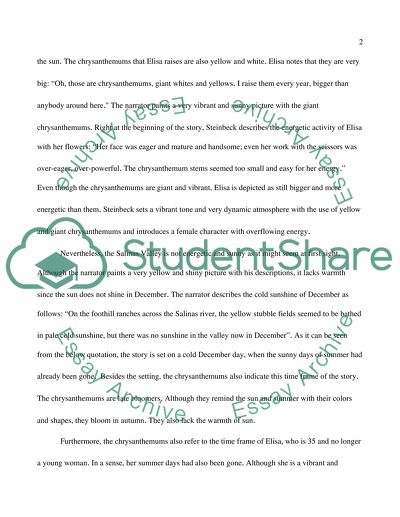Cite this document
(“Flower Symbolism in John Steinbecks The Chrysanthemums Essay”, n.d.)
Retrieved from https://studentshare.org/literature/1438333-flower-symbolism-in-john-steinbecks-the-chrysanthemums
Retrieved from https://studentshare.org/literature/1438333-flower-symbolism-in-john-steinbecks-the-chrysanthemums
(Flower Symbolism in John Steinbecks The Chrysanthemums Essay)
https://studentshare.org/literature/1438333-flower-symbolism-in-john-steinbecks-the-chrysanthemums.
https://studentshare.org/literature/1438333-flower-symbolism-in-john-steinbecks-the-chrysanthemums.
“Flower Symbolism in John Steinbecks The Chrysanthemums Essay”, n.d. https://studentshare.org/literature/1438333-flower-symbolism-in-john-steinbecks-the-chrysanthemums.


